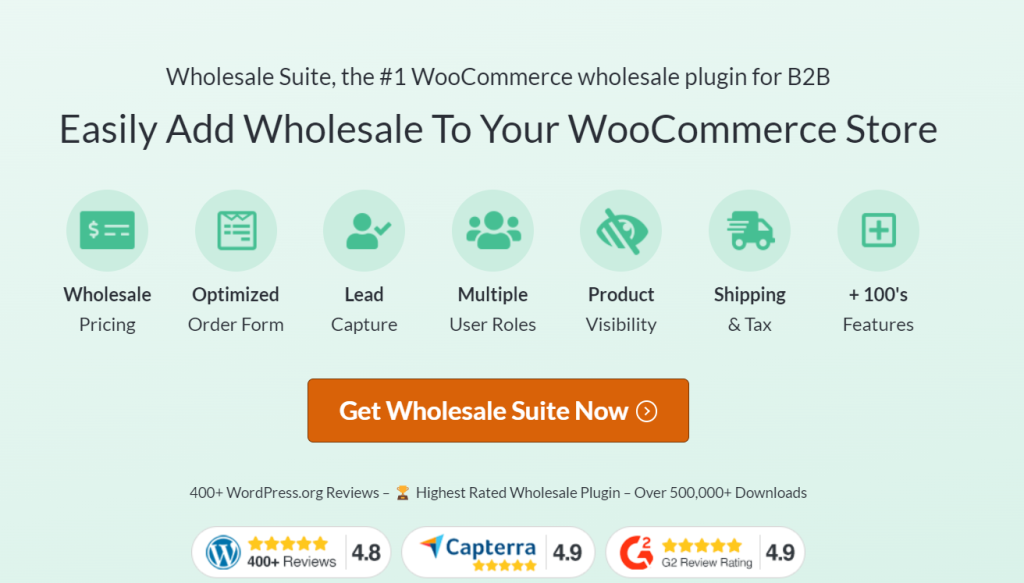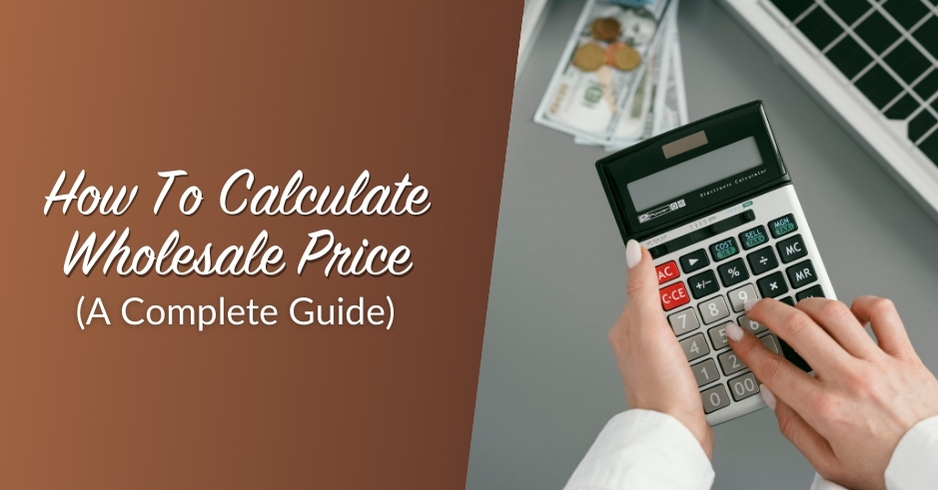
As a wholesale business owner, you’re likely excited about the prospect of a new year ahead. After all, it’s the opportune time to recalibrate and set new goals for your business. You don’t need to navigate this journey alone – we’re here to guide you during this preparation period by helping you create a solid wholesale business plan!
With a solid wholesale business plan, you can lay the groundwork for your success this 2025. In the following guide, we’ll navigate through essential phases, from reflection to goal-setting and strategic planning. So, without further ado, let’s dive in!
Building Your Wholesale Business Plan: 7 Key Steps
Taking time to craft your wholesale business plan can help you make the most of the year ahead and bring your business to a new level. In the following section, we’ve laid down the essential steps for you:
1. Identify bottlenecks in your operations
The first thing you need to do before creating your wholesale business plan is to take a step back and take a look at your wholesale operations. Then, identify the inefficiencies, bottlenecks, and aspects for improvement. This necessary step gives valuable insights for your wholesale business plan, revealing where you should allocate your resources and focus your efforts for 2025.
As you move through this process, evaluate each aspect of your wholesale operations. Some key areas to evaluate include order fulfillment, inventory management, technology, and communication. Below are some relevant questions you can ask:
- Are there inefficiencies in your ordering processes that can be streamlined?
- Does your current technology stack effectively support your operations, or is there room for upgrades?
- What manual processes can be automated to save time and enhance efficiency?
- How seamless is the customer experience, and where can it be improved for enhanced satisfaction?
2. Assess customer relationships
Your wholesale customers are the lifeblood of your business, ultimately driving its continued growth and success. Therefore, evaluating the state of customer relationships is a crucial step in crafting your wholesale business plan. This step will help you identify the best marketing strategies, communication initiatives, and offerings you can implement for your business in 2025.

Here are some key considerations you should look into:
- Tailored offerings: How aligned are your current offerings with the needs of your customers?
- Communication: How effective are your current means of communication with your clients?
- Feedback loops: Do you have systems in place for feedback? How easily can customers provide feedback, and how is it leveraged to improve your current processes/offerings?
- Customer service and conflict resolution: How satisfied are your customers with your conflict resolution processes? Do you resolve concerns promptly or are there room for improvement?
3. Set clear goals
After taking a step back and assessing your wholesale business, you now have a clear picture of which areas you need to focus on to drive your business forward for the coming year. Use the insights you’ve gathered so far to identify your top priorities on your 2025 wholesale business plan.
Let’s say you’ve noticed that your wholesale business falls short of meeting client expectations when it comes to your online ordering processes. Then, one of your key goals might be to streamline the online ordering system, ensuring a user-friendly experience for your B2B clients. Consequently, your actionable strategy may be to invest in a tool like Wholesale Suite, which allows you to set up seamless ordering forms for your wholesale customers.
Here are other examples of goals you may have for your business, depending on your assessments:
- Increase customer retention by x% by implementing a customer loyalty program and improving customer service.
- Expand product offerings by introducing x number of new products.
- Achieve an overall x% growth in annual revenue.
- Improve your business’s overall online presence and e-commerce conversion rates.
These goals you set can serve as your guide, driving the actions and strategies to improve your overall wholesale operations.
While goals provide direction, it’s still crucial to adopt a dynamic approach and be open to change. Market shifts, changes in customer behavior, and other external factors can influence the trajectory of your business, so schedule regular reviews and refine your goals as needed.
To guide you in setting and achieving your business goals, we’ve created a comprehensive resource that you can explore here.
4. Research current market trends
Staying informed of the current shifts in your industry is another critical aspect of creating a strategic wholesale business plan. As part of the preparation stage, this step allows you to recognize emerging trends you can capitalize on to align your business with the current landscape. Much like reviewing your operational bottlenecks, this also allows you to identify the areas where you should allocate your resources and efforts.

Begin by combing through industry reports that highlight key emerging trends and shifts in market behavior. Trade shows and networking events are also great opportunities to gather firsthand industry insights. Additionally, you can leverage your feedback loops to stay informed of any changes in your market’s preferences or expectations.
As you do your research, use your discernment to filter out the most relevant and impactful trends for your wholesale business. Refer to your set goals earlier to identify which trends contribute directly to your business objectives.
5. Brainstorm your key growth strategies
With a comprehensive understanding of your wholesale operations, current business landscape, and customer relationships, you’re more than ready to dive into the strategizing part of your wholesale business plan! This step is the most exciting and important part, as it entails identifying the key actions you’ll take to reach your business goals this 2025.
Here are some key aspects to cover:
- Marketing: Depending on your goals, you may focus your efforts on marketing to new customers or nurturing existing customer relationships. Key strategies include launching digital campaigns, leveraging SEO, and even attending industry events.
- Pricing: How effective is your current pricing model for your B2B customers? Based on your evaluation, you may also consider implementing tiered discounts, order minimums, or loyalty programs.
- Technology: Additionally, you’ll want to strategize on how to leverage technology to make your operations more efficient. Explore tools and platforms such as Wholesale Suite to improve the e-commerce experience of your clients.
- Market expansion: If one of your goals is to explore new markets and capitalize on untapped customer segments, you can also strategize on which market penetration strategies will work best for your business.
- Inventory management: What technologies or changes do you need to implement to make your inventory management more efficient? For example, you may want to invest in inventory management software that integrates seamlessly with your existing systems.
These are just a few of the aspects in your wholesale business plan can cover as you strategize. As there are many aspects to consider, it’s also important to prioritize based on your defined business goals. Doing so will aid you in the next step, where you’ll identify where to allocate your time, efforts, and resources.
6. Allocate resources and plan your investments
By this point in your planning, you already know your goals and the strategies you can use to achieve them. This is the practical side of your wholesale business plan, where you plan your investments and allocate your resources to turn your goals into outcomes.

Firstly, conduct a thorough assessment of your business finances. Assess your budget and allot funds to your biggest priorities. This can cover aspects such as marketing campaigns, technology upgrades, and potential expansions.
If your growth strategies also necessitate operational changes, you’ll also need to take this into account. For example, you may need to allot a budget for hiring new talent, upskilling your team, or restructuring your current workflows.
Balance is key when it comes to this step. As you move along, keep your top goals and priorities in mind. This will ensure that each aspect of your plan receives the necessary attention to actualize your goals.
7. Don’t forget about risk management
The business landscape is always changing, making risk management a critical part of your wholesale business plan.
As an extension of your resource planning, make sure to allot a contingency fund as a buffer to navigate unforeseen challenges. Additionally, consider diversifying your suppliers to minimize the impact of potential supply chain disruptions. Lastly, you’ll want to stay informed and updated about any market changes that can impact your business.
Risk mitigation is an ongoing process, so make sure to schedule regular audits and reviews of your operations. Keeping an eye on potential risks can help you stay prepared, fostering the trust and resilience of your valued B2B clients and stakeholders.
Enhance Your Business With Wholesale Suite
Having the right tools at your disposal can do wonders in helping you achieve the goals you’ve outlined in your 2025 wholesale business plan.
Wholesale Suite, a set of powerful plugins for WooCommerce, offers invaluable solutions to streamline your operations and enhance the customer experience. Let’s discover how these plugins can be an integral part of your 2025 strategy:

Wholesale Prices Premium
This powerful plugin gives you full control over your wholesale pricing strategies. It allows you to set wholesale prices on your WooCommerce store, implement tiered discounts, minimum order quantities, and more. It also allows you to create additional wholesale user roles and tweak product visibility to ensure a tailored B2B customer experience.
Wholesale Order Form
Wholesale Order Form features an intuitive and easy-to-use drag-drop form builder to help you create one-paged ordering forms for your wholesale clients. These customized order forms provide a streamlined ordering experience, saving your customers time and increasing their satisfaction.
Wholesale Lead Capture
With Wholesale Lead Capture, you can create customized registration forms to capture B2B leads seamlessly on your WooCommerce store. This plugin also allows you to automate post-registration actions, set approval systems, and streamline onboarding B2B clients into your wholesale ecosystem.
Conclusion
The business landscape is ever-changing. New technologies, shifts in market demands, and unforeseen events can impact your business at any time. Savvy wholesalers know that preparation is key to thriving in this era. Therefore, having a well-crafted wholesale business plan can help lay the foundation for your success and growth in 2025.
This guide has walked you through the key steps to take to create an effective plan. To summarize, let’s review these steps below:
- Assess your operations and identify bottlenecks
- Evaluate customer relationships
- Set clear goals
- Research market trends
- Identify key growth strategies
- Allocate your resources and plan for investments
- Don’t forget about risk management
Having the right tools by your side can help make the implementation of your chosen strategies much easier. Powerful tools like Wholesale Suite help you streamline your WooCommerce wholesale operations, enriching the customer experience and helping you achieve your goals.
What are your aspirations for your business this 2025? Which aspects of your business are you focusing on? Share it with us in the comments section below!





Excellent advice. Thank you very much. Even though we’ve been using Wholesale Suite for a while, with great success and satisfaction, it’s always useful to remember the basics. Thanks for a great suite.
Glad you found the article useful Didier! Thanks for being with us :) Always good to hear from our long term store owners.